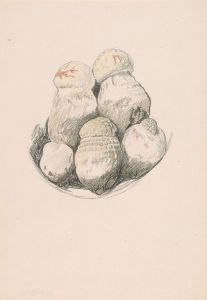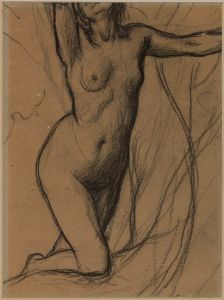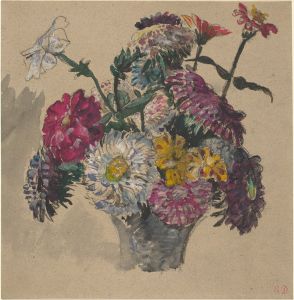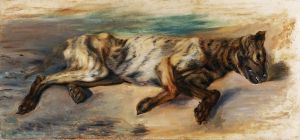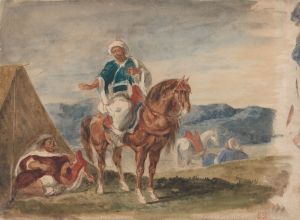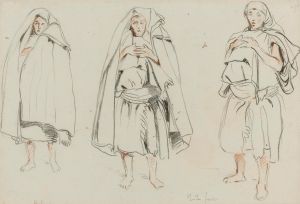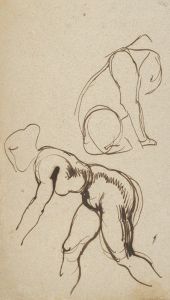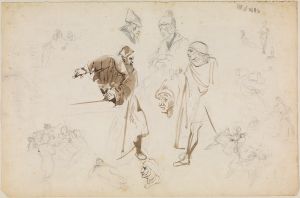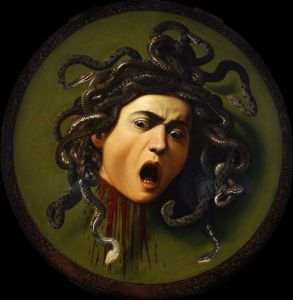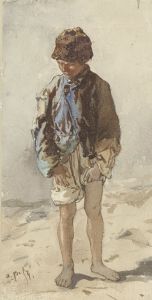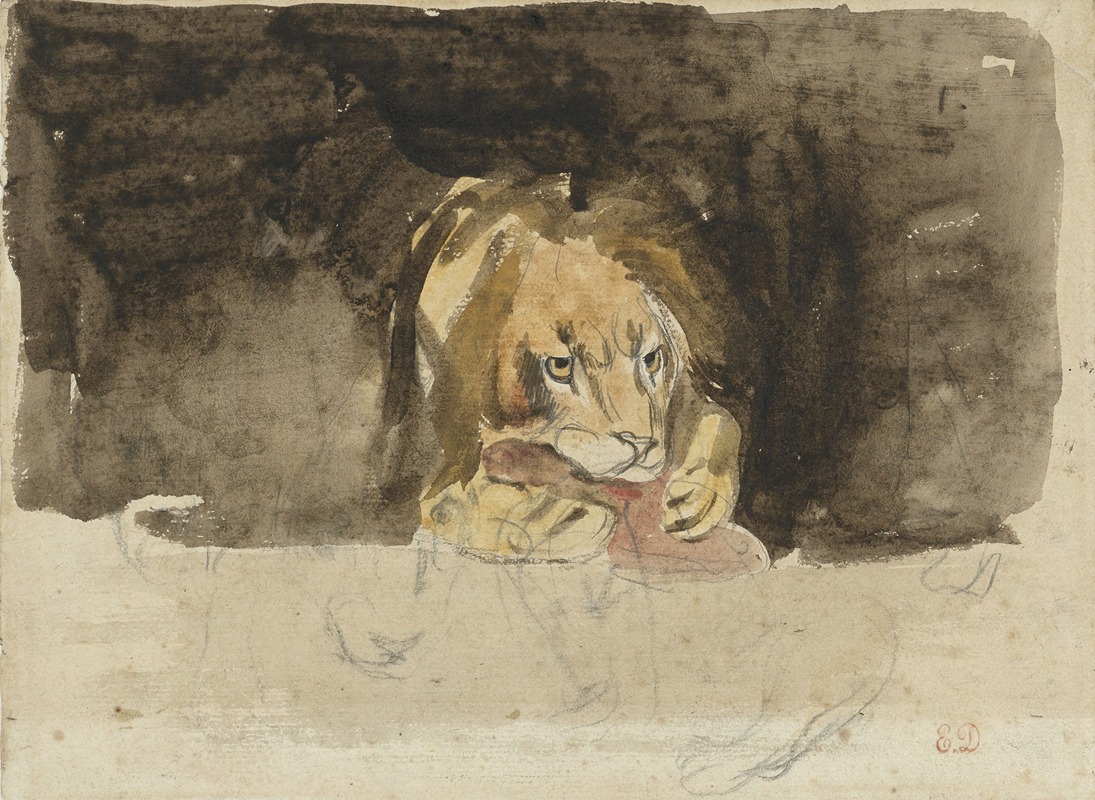
Vleesetende leeuw, van voren gezien, uitkomende tegen een donker fond
A hand-painted replica of Eugène Delacroix’s masterpiece Vleesetende leeuw, van voren gezien, uitkomende tegen een donker fond, meticulously crafted by professional artists to capture the true essence of the original. Each piece is created with museum-quality canvas and rare mineral pigments, carefully painted by experienced artists with delicate brushstrokes and rich, layered colors to perfectly recreate the texture of the original artwork. Unlike machine-printed reproductions, this hand-painted version brings the painting to life, infused with the artist’s emotions and skill in every stroke. Whether for personal collection or home decoration, it instantly elevates the artistic atmosphere of any space.
Eugène Delacroix, a prominent French Romantic artist, is renowned for his expressive brushwork and vibrant use of color. One of his lesser-known works is "Vleesetende leeuw, van voren gezien, uitkomende tegen een donker fond," which translates to "Carnivorous Lion, Seen from the Front, Emerging Against a Dark Background." This painting exemplifies Delacroix's fascination with the wild and untamed aspects of nature, a theme recurrent in his oeuvre.
Delacroix was born on April 26, 1798, in Charenton-Saint-Maurice, Île-de-France, and became a leading figure in the Romantic movement. His works often depicted dramatic and exotic subjects, drawing inspiration from literature, history, and his travels. Delacroix's interest in the animal kingdom, particularly in the depiction of lions, can be traced back to his visits to the Jardin des Plantes in Paris, where he studied and sketched animals in the menagerie.
The painting "Carnivorous Lion, Seen from the Front, Emerging Against a Dark Background" captures the raw power and majesty of the lion, a creature that fascinated Delacroix throughout his career. The lion is portrayed with a sense of immediacy and vitality, emerging from a shadowy background that enhances its formidable presence. Delacroix's use of color and light in this work is particularly noteworthy, as it highlights the lion's muscular form and fierce expression.
Delacroix's technique in this painting reflects his mastery of Romanticism, characterized by dynamic compositions and a focus on emotion and movement. The brushwork is vigorous and fluid, conveying the energy and tension inherent in the subject. The dark background serves to isolate the lion, drawing the viewer's attention to its powerful stance and intense gaze.
Throughout his career, Delacroix was influenced by a variety of sources, including the works of earlier masters like Peter Paul Rubens and the writings of contemporary authors. His interest in the exotic and the dramatic is evident in many of his paintings, including his famous work "Liberty Leading the People." In "Carnivorous Lion, Seen from the Front, Emerging Against a Dark Background," Delacroix channels these influences into a compelling portrayal of one of nature's most formidable predators.
While this particular painting may not be as widely recognized as some of Delacroix's other works, it nonetheless exemplifies his skill in capturing the essence of his subjects. Delacroix's ability to convey the spirit and vitality of the lion is a testament to his keen observational skills and his deep appreciation for the natural world.
Eugène Delacroix passed away on August 13, 1863, in Paris, leaving behind a legacy that continues to influence artists and art enthusiasts worldwide. His works remain celebrated for their emotional depth, technical brilliance, and the vivid portrayal of the human and natural worlds. "Carnivorous Lion, Seen from the Front, Emerging Against a Dark Background" stands as a testament to Delacroix's enduring fascination with the wild and untamed, capturing the imagination of those who encounter it.





